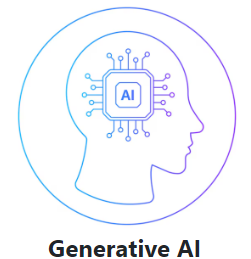Generative AI Class
Public: $1,999 USD/seat | Private: $9,999
This is a 2-day class from 9:00 am to 5:00 pm EST
Our immersive Generative AI class will provide in-depth explanations, demonstrations, and hands-on labs to introduce you to the world of Generative AI in an enterprise setting that require security, scalability, and extensibility. Through expert-led explanations, demonstrations, and hands-on labs, you'll gain a deep understanding of Generative AI principles, algorithms, applications, and capabilities. Led by Microsoft Regional Director Lino Tadros, this course will provide you with the tools and insights to effectively leverage Generative AI and elevate your organization's capabilities!
Prerequisites:
- Familiarity with general asynchronous programming (preferred)
- Familiarity with Azure ecosystem (preferred)
- Familiarity with ML & deep learning basics (preferred)
- Familiarity with algebra & probability (preferred)
In this course, we will be covering:
- Creation & Fundamentals of LMs: LLMs & SLMs
- Generative AI Fundamentals: GANs, VAEs, Autoregressive, & Diffusion
- Prompt Engineering Techniques & Best Practices
- Utilizing Zero-Shot & Few-Shot Prompts
- Running Few-Shot Prompts against OpenAI LLMs
- Comprehensive overview of Orchestrator Fundamentals
- Semantic Kernel Utilization for merging LLMs with conventional programming
- LangChain Utilization for Application Development via LLMs
- Deep Dive into the Retrieval Augmentation process (RALM, RAG, ReAct, & COT)
- Embedding Models for Dimensionality Reduction, preparing for ML ingestion
- Vectorization for accurately "quantifying" qualitative inputs and dissecting semantics
- Security Hardening in AI era w/ Red Team Demonstration
- Row Level Security w/ SQL in Generative AI
- Designing Agent bots (supervisor/worker) for collaboration with the LLM
* Public classes require a minimum of 4 registered attendees, otherwise it may be moved to the next scheduled occurrence of the class or potentially cancelled. Confirmation will be sent a week prior to the session, or as soon as we have booked 4 attendees.
** Each attendee will need the ability to run C# 10+ on their either Windows, Mac, or Linux machine, as well as access to the free version of Visual Studio 2022 at minimum. Attendees will also need Azure subscriptions ready to use, and must have full admin rights on their machines to participate. Finally, attendees will need to request access to the Azure Open AI platform, as well as possess quota to use the GPT-3.5 Turbo & GPT-4o models and the Ada-002 Embedding model.
*** Private classes have a maximum of 8 attendees, and each additional seat is $750. The date and time of delivery is negotiable with the customer for private sessions (all time zones welcome).
**** To inquire about a private class, please fill out the form below and we will reach out promptly
Next Available Public class TBA
Copyright © 2025 The Training Boss LLC
Developed with Sitefinity 15.3.8500 on ASP.NET 9

